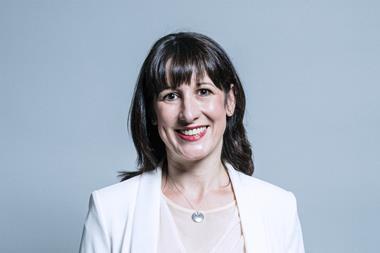Still does not mean static in the soft drinks market.
Bottled water companies see potential for bringing UK consumption to Continental European levels, smoothie companies know consumer trends are bringing the market to their door and juice companies feel they just have a credibility gap to bridge.
"There's a bit of a myth with retailers," says Leigh Edwards, commercial director for Del Monte. "You talk to some buyers and they think the juice sector is old and tired. But we see it differently. We see massive potential for growth."
Edwards argues that 40% of adults do not drink juice on a regular basis which, he feels, is a significant area for expansion as people cast around for healthier, non-alcoholic drinks in the day.
One important misconception about the sector is that the juice market is all about chilled, he says. "Consumers buy both chilled and ambient during the week and they drink them at different times and for different occasions. Sixty per cent of juice is ambient and that's growing."
He adds: "Consumers do not understand 'from concentrate' or 'not from concentrate'. They call it 'long life' or 'fresh'."
Juice is, of course, just one part of the still drinks market and the range of products it represents - from water to juices to smoothies to cordials - is so wide it has now eclipsed fizzy drinks.
"There are key trends to watch out for in this category: functional drinks, flavours and time of consumption," says Jason Hood, head of marketing at Coca-Cola Enterprises.
"An increasing focus on living well is driving growth in the health and wellness category as consumers seek products that fit into their hectic lifestyles as well as offering great taste and convenience.
"Consumers will continue to seek a more premium option of juices and the growth of smoothies and functional drinks looks set to continue. Innovating flavours is still imperative and while the desire for orange is still strong, we expect to see new and exciting flavours develop. Juice and juice drinks are being consumed outside breakfast hours and at CCE we believe this is a trend that will continue to emerge and be capitalised on."
Figures from TNS for the year to the end of January indicate that juices are 30% of the soft drinks market - the single biggest segment - and mineral water has 9% while colas take 19%.
David Patmore, marketing director for Princes, owner of the Aqua-Pura water brand, says: "Volume sales of bottled water will soon overtake those of carbonates but, with an average selling price of just 34p per litre, the value of the water category remains relatively low.
"Sustained value-added new product development is vital to drive value growth in the water category."
Nonetheless, British bottled water companies are keen for their consumers to drink like Continental Europeans.
Data from Nielsen shows that last year Britons consumed 22.7 litres of bottled water per person compared with 136 in Italy, 133 in Germany and 100 in France. Bottled water is about 20% of the UK soft drinks market whereas in Italy it is 76% and above 50% in all other Continental European countries. Indeed, the UK is the only country in Europe where more cola is consumed per person than water.
But there is a strong correlation between water sales and temperature.
"If the temperature rises from 14°C to 25°C, retailers will see a 75% increase in sales, and if the temperature rises to 30°C, water sales will increase by 125%," says Steve Flanagan, category strategy manager at Danone Waters, owner of the Volvic and Evian brands.
"This makes it imperative for retailers to be fully prepared and with their water chillers correctly merchandised." n


















No comments yet